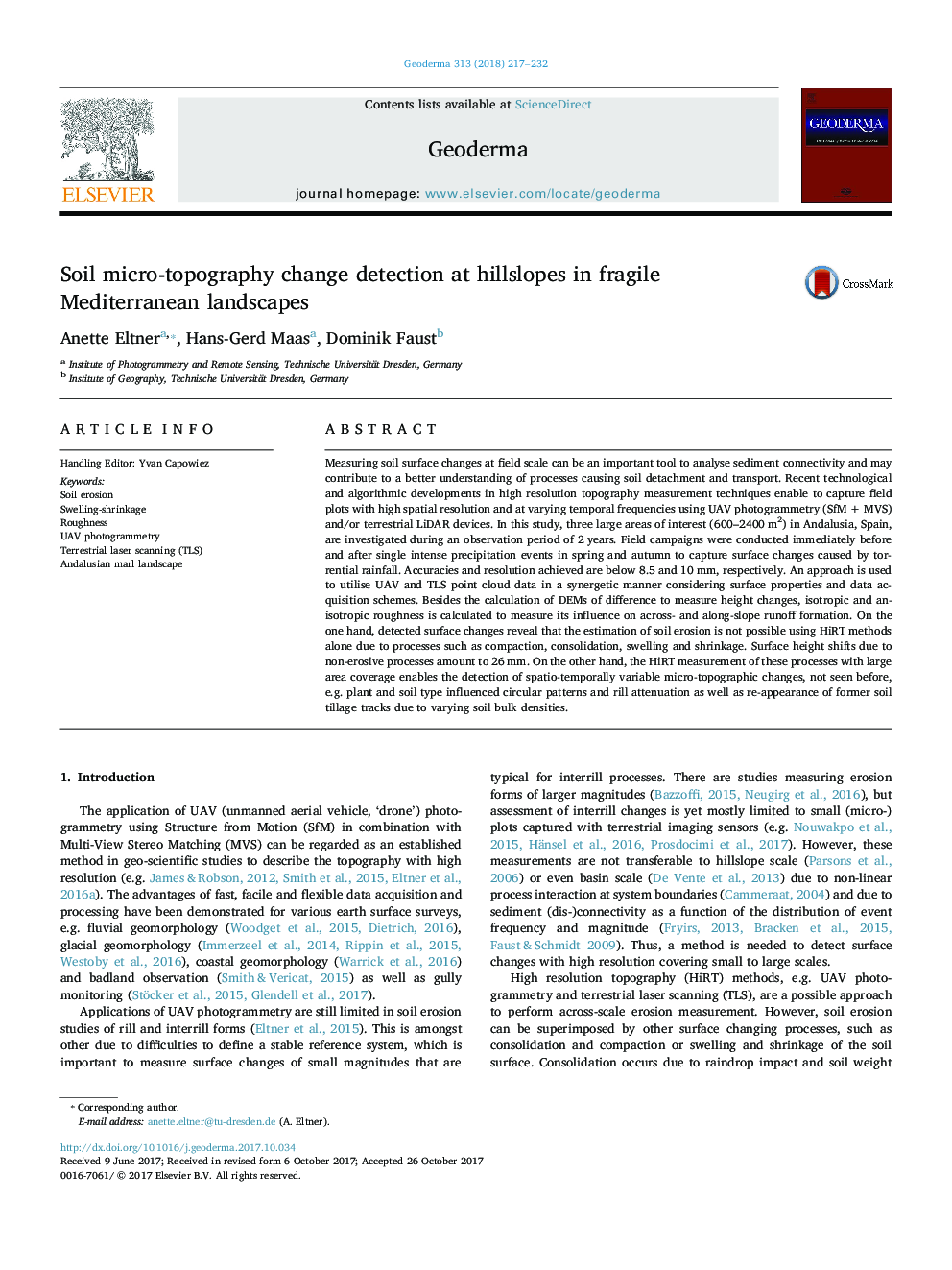| Article ID | Journal | Published Year | Pages | File Type |
|---|---|---|---|---|
| 8894356 | Geoderma | 2018 | 16 Pages |
Abstract
Measuring soil surface changes at field scale can be an important tool to analyse sediment connectivity and may contribute to a better understanding of processes causing soil detachment and transport. Recent technological and algorithmic developments in high resolution topography measurement techniques enable to capture field plots with high spatial resolution and at varying temporal frequencies using UAV photogrammetry (SfMÂ +Â MVS) and/or terrestrial LiDAR devices. In this study, three large areas of interest (600-2400Â m2) in Andalusia, Spain, are investigated during an observation period of 2Â years. Field campaigns were conducted immediately before and after single intense precipitation events in spring and autumn to capture surface changes caused by torrential rainfall. Accuracies and resolution achieved are below 8.5 and 10Â mm, respectively. An approach is used to utilise UAV and TLS point cloud data in a synergetic manner considering surface properties and data acquisition schemes. Besides the calculation of DEMs of difference to measure height changes, isotropic and anisotropic roughness is calculated to measure its influence on across- and along-slope runoff formation. On the one hand, detected surface changes reveal that the estimation of soil erosion is not possible using HiRT methods alone due to processes such as compaction, consolidation, swelling and shrinkage. Surface height shifts due to non-erosive processes amount to 26Â mm. On the other hand, the HiRT measurement of these processes with large area coverage enables the detection of spatio-temporally variable micro-topographic changes, not seen before, e.g. plant and soil type influenced circular patterns and rill attenuation as well as re-appearance of former soil tillage tracks due to varying soil bulk densities.
Related Topics
Physical Sciences and Engineering
Earth and Planetary Sciences
Earth-Surface Processes
Authors
Anette Eltner, Hans-Gerd Maas, Dominik Faust,
